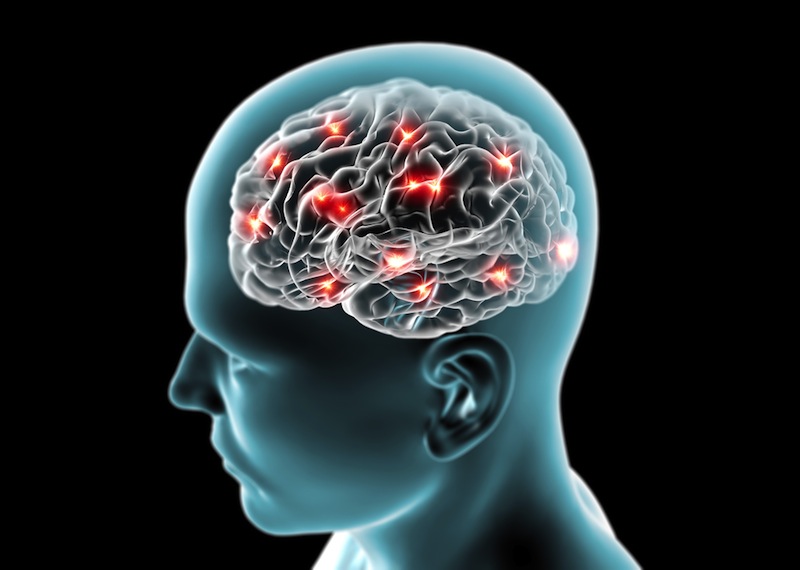Dissolving Implants Could Monitor the Brain One Day, Rat Study Shows


Tiny, wireless, electronic implants that melt away in the body could one day help doctors monitor the brain, new research in rats suggests.
Similar devices could be used elsewhere in the body, potentially as a way to deliver medicine to targeted locations, the scientists said in the study.
Electronic implants can now help treat everything from heart attacks to traumatic brain injuries. For instance, pacemakers can help keep the heart beating properly, while brain sensors can monitor patients for potentially dangerous swelling and pressure in the brain. [5 Crazy Technologies That Are Revolutionizing Biotech]
However, standard permanent electronic implants can pose risks to patients because these devices can become sites of infection, researchers said. Such afflictions can trigger immune responses and result in complications associated with their surgical removal.
Now, scientists working with rats have developed new implants that can monitor brain activity and then dissolve, or "resorb," a few weeks after implantation.
"We are excited because this work demonstrates a new kind of implantable electronic device, with a key unique feature — complete bioresorbability — that opens up many possibilities for its use in improving health outcomes for patients," study senior author John Rogers, a materials scientist at the University of Illinois at Urbana-Champaign,told Live Science.
The researchers developed silicon-based sensors, each about the size of a grain of rice (up to 0.2 inches, or 6 millimeters, long). These devices are made of extremely thin sheets of silicon, which are naturally biodegradable and can record pressure and temperature — crucial things to monitor after a brain injury or surgery — about as accurately as conventional monitoring devices, the researchers said.
Get the world’s most fascinating discoveries delivered straight to your inbox.
Biodegradable wires made of a metallic element called molybdenum then connect these sensors to external head-mounted devices that relay sensor data outward. The sensors and wires eventually dissolve completely and harmlessly in the fluid in the brain and spine, called cerebrospinal fluid, the researchers explained.
"These kinds of systems have potential across a range of clinical practices, where therapeutic or monitoring devices are implanted or ingested, perform a sophisticated function, and then resorb harmlessly into the body after their function is no longer necessary," Rogers said in a statement.
In experiments in rats, the sensors could operate continuously for up to three days. Rogers and his colleagues noted that patients with traumatic brain injuries are typically monitored for several days after their injury. The scientists are now improving their devices so they can operate for a few weeks instead of just a few days, Rogers said.
"The ultimate strategy is to have a device that you can place in the brain or in other organs in the body that is entirely implanted, intimately connected with the organ you want to monitor and can transmit signals wirelessly to provide information on the health of that organ, allowing doctors to intervene, if necessary, to prevent bigger problems," study co-author Rory Murphy, a neurosurgeon at the Washington University School of Medicine in St. Louis, said in a statement. "After the critical period that you actually want to monitor, it will dissolve away and disappear."
The scientists noted that the external transmitters could still be a source of infection. To overcome this issue, they developed an implantable transmitter about 0.6 inches (1.5 centimeters) wide, or about the size of a postage stamp, that does not require wiring through the skin. This implant is not yet completely dissolvable — the body can resorb only about 85 percent of it — but recent research by Rogers and his colleagues suggests that they could make it completely biodegradable, Rogers said.
The researchers are moving toward human clinical trials for their devices. They also plan to add even more capabilities to these implants, such as motion sensing or acidity monitoring.
Moreover, "In the near future, we believe that it will be possible to embed therapeutic function, such as electrical stimulation or drug delivery, into the same systems while retaining the essential bioresorbable character," Rogers said in a statement. Future research could lead to even smaller devices, as microchips have shrunk over the decades, Rogers added.
The scientists detailed their findings online Jan. 18 in the journal Nature.
Follow Live Science @livescience, Facebook & Google+. Original article on Live Science.



